French erotic publishing between the wars
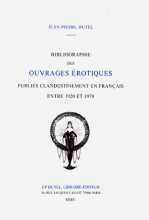 In 2005 the Paris bookseller and expert on French erotic publishing, Jean-Pierre Dutel, produced the third volume of his encyclopedaic survey Bibliographie des ouvrages érotiques publiés clandestinement en français, covering the period from 1920 to 1970. The introduction provides a general survey, and we are pleased to make this accessible to the English-language reader, starting with the period from 1920 to 1939.
In 2005 the Paris bookseller and expert on French erotic publishing, Jean-Pierre Dutel, produced the third volume of his encyclopedaic survey Bibliographie des ouvrages érotiques publiés clandestinement en français, covering the period from 1920 to 1970. The introduction provides a general survey, and we are pleased to make this accessible to the English-language reader, starting with the period from 1920 to 1939.
Jean-Pierre’s Paris bookshop, Librairie Dutel, specialising in what the French call ‘curiosa’, is at 16 rue Jacques Callot, and is well worth a visit. You can find a selection of books the shop has for sale here (click on ‘Search’ to see them) at AbeBooks.
Where the works he mentions are available here on the website we have created links so you can go directly to see them.
In 1920 the First World War had only been over for a few months, and publishers, both legal and otherwise, were slowly resuming their activities. Their books were mostly printed on poor-quality paper that quickly turned yellow.
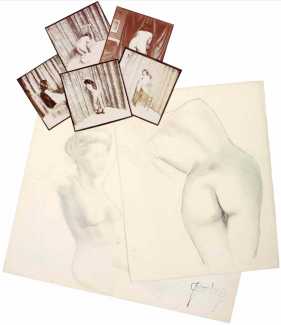
The Briffaut Brothers, who had been very active in clandestine publishing at the beginning of the century, quickly made the move to more acceptable illustrated editions, though we also owe to Georges Briffaut the beautiful 1938 illustrated edition of Pierre Louÿs’ La femme: trente-neuf poèmes érotiques inédits, with drawings and photographs by Louÿs himself.
Jean Fort now dedicated himself exclusively to the production of sado-masochistic novels, of which his Collection d’Orties Blanches (White Nettle Collection) was the flagship.
Charles Hirsch, whose bookshop was now installed in the galleries of the Palais-Royal, published just two works, including in 1934 the first French translation of the complete Teleny, written in 1893 by Oscar Wilde and his friends.
Alongside the mediocre productions of small publishers intended for those hungry for pornographic texts, luxury publications with limited circulation, reserved for a new clientele of wealthy bibliophiles, started to appear in the catalogues of the upmarket publishers of illustrated books.
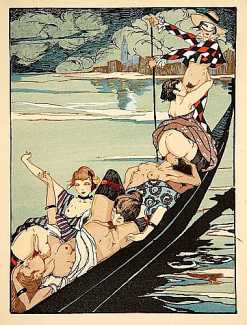
In 1920 the bookseller Simon Kra, his shop at 6 rue Blanche in Paris, entrusted André Malraux (shortly to start working for the influential gallery owner and art collector Daniel-Henry Kahnweiler) with the artistic direction of the recently-created Éditions du Sagittaire. Under this imprint between 1920 and 1926 Kra published a dozen luxury erotic books, most of them illustrated, including two superb works, Louis Marsolleau’s poetry collection Rubans et noeuds, illustrated by André Deslignères, and Le Bordel de Venise, illustrated by Géorges Drains.
Maurice Duflou, a printer-publisher based in the Goutte d’Or district of Paris where he worked alone in his press, was a close friend of Louis Perceau, who prefaced many of Duflou’s publications with great erudition. These two accomplices re-edited many classic erotic texts, frequently adding illustrations. Duflou almost exclusively used the same typefaces and design, so his productions with their uniform typography are easily recognisable. The art critic Sarane Alexandrian described him as ‘a very distinguished old anarchist, going to his printing press dressed formally, with a hat with rolled edges, a navy blue silk scarf with white polka dots, a well-cut overcoat, holding his cane in one hand, and with the other a bag stuffed with erotic books to offer to specialist bookshops’. He was one of the first publishers in the twentieth century to ask novelists to write new erotic texts. Renée Dunan provided him with Les caprices du sexe and Michèle Nicolaï with Une jeune fille à la page, both very good novels. But Duflou’s greatest discovery was Johannès Gros, ‘a very cultivated journalist, having a passion for female lingerie which he always described in the most graphic terms’; Alexandrian called Gros ‘the spiritual heir of Andrea de Nerciat’.
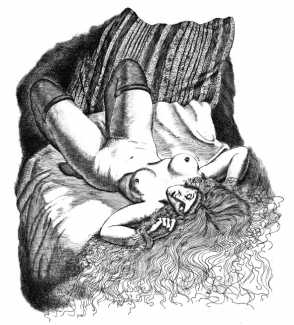
René Bonnel (1884–1975), war veteran and publisher, and Pascal Pia (the pseudonym of Pierre Durand, 1903–79, one of the greatest figures of twentieth-century French literature, a man in the shadows but always willing to accomplish the thankless but necessary tasks which bring no glory), formed the other two-headed hydra of clandestine publishing in the interwar period. They were really only interested in previously unpublished texts. Pia’s friend Michaël Guittard wrote, ‘From a calm childhood to an emaciated adolescence, Pierre Durand gradually began to revolt with almost religious fervour, advocating a frenzied individualism and rejecting all authority, whether military, state or academic. Whether as a perfectionist or a nihilist, he hesitated to be personally associated with his works (at least those under his own name), and was animated by a bitter awareness of the vanity of things, a sharp feeling of the absurdity of writing and existence’. Pia/Durand thus composed and published pastiches of Apollinaire, Baudelaire, Jarry, Radiguet and Rimbaud, trapping naive scholars into believing them to be the real thing.
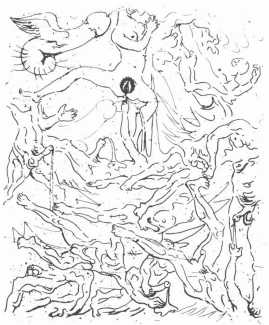
Bonnel and Pia bequeathed us two masterpieces of erotic literature illustrated by André Masson – Le con d’Irène and L’histoire de l’oeil, both published in 1928. At the end of that year, during a raid at their printers (who were also producing a fake Hachette edition of Pierre Mac Orlan’s Mademoiselle de Mustelle) the police confiscated the first printed sheets of Benjamin Péret’s Les couilles enragés, and Bonnel and Pia had to abandon the project to publish Péret’s book; it did not see the light of day until 1954 in a Losfeld edition under the pseudonym of Satyremont and the title Les rouilles encitées. The two friends had to let their other writers know what had happened; Maurice Saillet confirmed to André Heinrich, the eminent specialist in the work of Jacques Prévert, that during the last months of 1928 the author of Paroles had written a new erotic text for Bonnel and Pia which also had to be abandoned.
Other smaller publishers were also experimenting with erotica. Paul Cotinaud published an attractive Semaine secrète de Vénus in 1926; the same year Gaston Boutitie, friend of Gustave Brouet, published a beautiful edition of Un été à la campagne. In 1927 Robert Telin published in facsimile the first edition of the sublime Douze douzains de dialogues by Pierre Louÿs. In 1934 Marcel Lubineau produced three beautiful volumes of Apollinaire’s complete erotic works, and the Montmartre publisher Marcel Seheur created an attractive series of erotic works in distinctive pink covers.
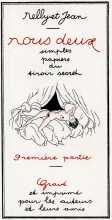 In 1922 the painter Jean Lurçat produced engravings for a stylish edition of Soliloques Napolitains with poems by Pierre Albert-Birot, and in 1926 for one of the masterpieces of erotic literature, Roger, ou les à cotés de l’ombrelle.
In 1922 the painter Jean Lurçat produced engravings for a stylish edition of Soliloques Napolitains with poems by Pierre Albert-Birot, and in 1926 for one of the masterpieces of erotic literature, Roger, ou les à cotés de l’ombrelle.
In 1929 Marcel Valotaire wrote and produced a magnificent edition of Nous deux, illustrated by his friend Jean Dulac, and in 1932 co-edited the unforgettable Mascarades et amusettes by Charles Martin.
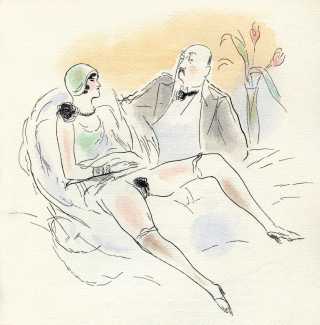
Some highly talented artists could not resist the pleasure of self-publishing. In 1928 Marcel Vertès illustrated and financed a sumptuous edition of Pybrac, produced in an edition of just thirty copies. Paul-Emile Bécat did the same in 1932 with Huit images.
A magnificent edition of Chansons de Bilitis, illustrated with wood engravings by Pierre Boucher after watercolours by George Barbier, was produced in 1929 thanks to the patronage of a dedicated group of bibliophiles. Also in 1929 the directors of the Belgian magazine Variétés added erotic photographs by Man Ray to a selection of poems by Louis Aragon and Benjamin Péret.
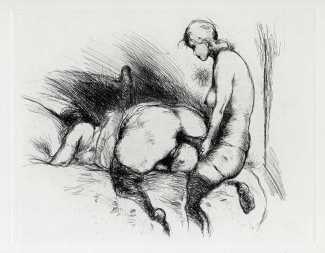
The painter-engraver and writer Frans de Geetere, who lived with his artist companion May den Engelsen on the Marie-Jeanne, a barge moored near the Pont-Neuf, self-published some of his own fine works in the mid-1920s, including a unique collection of etchings entitled Spasmes.
The painters Berthommé Saint-André and Lobel-Riche, as well as other stars of bibliophilic illustration from this period, Carlègle, Chimot, Collot, Courbouleix, Galanis, Lafnet, Sauvage and many others, also exercised their talents in luxury erotic publishing.
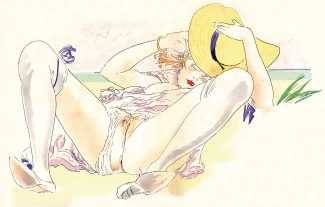
Another very gifted illustrator of the period is still much appreciated by collectors – Fedor Rojankowski, or Rojan. Besides his illustrations for children’s books from the Père Castor collection, he left us two masterpieces, Idylle printanière and the first illustrated edition of Raymond Radiguet’s Vers libres.

